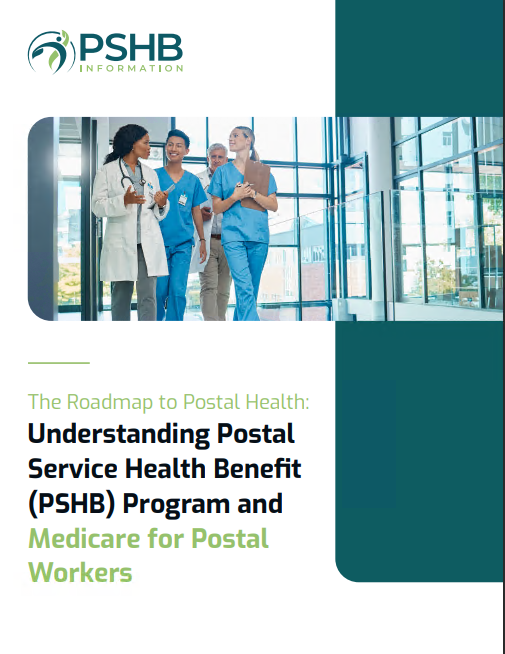Key Takeaways
- The Postal Service Health Benefits (PSHB) program will begin in 2025, offering new health plan options to postal workers and retirees.
- Employees and retirees should stay informed about premium costs, coverage details, and enrollment procedures to make the best decision for their needs.
PSHB Premiums and Coverage Details Are Still Coming—Here’s What Postal Workers Should Expect and Watch For in the Months Ahead
The Postal Service Health Benefits (PSHB) program is set to launch in 2025, replacing the Federal Employees Health Benefits (FEHB) program for postal workers and retirees. This significant change is part of the 2022 Postal Service Reform Act and aims to establish more tailored health plans for the postal workforce. With many details still pending, postal employees and retirees must prepare themselves for this transition by understanding the expected changes, premium structures, and potential impacts on their health coverage.What Is the PSHB Program?
The PSHB program is a new initiative that will provide health coverage specifically for United States Postal Service (USPS) employees, retirees, and their eligible family members. Unlike the current FEHB program, the PSHB will be uniquely designed to meet the healthcare needs of postal employees. As of 2025, postal workers and retirees will no longer be covered under the FEHB but will transition to PSHB plans, which will fall under the management of the Office of Personnel Management (OPM). The aim of this shift is to reduce healthcare costs for the Postal Service and to tailor benefits packages that better align with the needs of USPS employees. However, it also means that postal workers and retirees need to be vigilant about upcoming changes, especially since detailed information on premiums, coverage, and plan options is still being finalized.Will Premiums Change Under the PSHB?
One of the biggest concerns for postal employees and retirees is how the PSHB program will impact premiums. Since the PSHB is a new program, it is likely that premium structures will differ from those under the FEHB. Premiums are expected to be determined based on factors such as the level of coverage, the specific plan chosen, and the individual’s health status and age. It’s crucial for postal workers and retirees to keep an eye on announcements from the OPM, as they will release information on the premium rates and coverage options closer to the program’s start date. Employees should also compare the new premium rates with their current FEHB premiums to understand the financial impact of the switch.What Coverage Options Can Postal Workers Expect?
Coverage details are still in the works, but postal workers can expect PSHB plans to offer various options similar to what they currently receive under FEHB. These options may include:- Inpatient and Outpatient Care: Hospitalization, surgeries, and other in-hospital services will be covered, though the extent of coverage may vary between plans.
- Preventive Services: Routine check-ups, vaccinations, and screenings will likely remain covered, promoting preventive healthcare measures for postal workers and retirees.
- Prescription Drug Coverage: Drug benefits will be an essential part of the PSHB program, although there may be changes in formulary lists and copay amounts compared to FEHB plans.
How Will Enrollment Work for the PSHB Program?
The enrollment process for the PSHB program will differ from the FEHB, requiring postal workers and retirees to actively transition into the new system. OPM will oversee the PSHB enrollment, providing postal employees with guidance on how to register and select a plan that fits their needs.Open Season Enrollment
Like the FEHB program, the PSHB will have an open season period when postal workers and retirees can enroll in or make changes to their healthcare plans. During this time, it’s essential for USPS employees and retirees to review their options carefully and choose a plan that offers the appropriate coverage at a reasonable cost.Coordination with Medicare for Retirees
A major difference with the PSHB is that retirees who are eligible for Medicare will be required to enroll in Medicare Part B as a condition for receiving PSHB benefits. This change aims to reduce healthcare costs for the USPS by integrating Medicare and PSHB coverage for retirees. Those who are already Medicare-eligible or approaching eligibility must prepare for this adjustment and understand how it will impact their coverage and out-of-pocket costs.Tips for Navigating the PSHB Transition
Given the impending changes, postal workers and retirees can take several steps to ensure they are prepared for the PSHB transition:- Stay Informed: Monitor updates from the OPM and USPS regarding the PSHB program. Official announcements will provide critical information about premium rates, coverage details, and enrollment dates.
- Compare Coverage Options: Once plan details are released, compare the available PSHB plans with your current FEHB plan. Consider factors like premiums, out-of-pocket costs, and specific benefits to determine the most suitable option for your needs.
- Plan for Medicare Enrollment: If you are a retiree eligible for Medicare, review the requirements for Medicare Part B enrollment and how it integrates with the PSHB program. This understanding will help you anticipate potential changes in your healthcare costs.
- Seek Guidance: Postal workers and retirees should seek assistance from OPM or other trusted sources if they have questions or concerns about the PSHB transition. Ensuring clarity on coverage, premiums, and enrollment processes will reduce the risk of misunderstandings or lapses in coverage.
What Can Retirees Expect?
Retirees will experience notable changes under the PSHB program, particularly in how their healthcare coordinates with Medicare. Retirees must enroll in Medicare Part B to be eligible for PSHB coverage, which means an additional premium cost for some individuals. However, this change also means that PSHB plans are likely to supplement Medicare benefits, reducing out-of-pocket expenses for covered services. Retirees should review how Medicare Part B enrollment might affect their overall healthcare budget. Understanding the integration between PSHB and Medicare will help retirees make informed decisions about plan selection and financial planning. Additionally, it is advisable to attend informational sessions or consult with licensed insurance agents to clarify details specific to their situation.The Impact on Postal Employees
Active postal employees should prepare for potential changes in coverage details and premium costs under the PSHB program. Since the specifics of each plan are still being finalized, employees should pay close attention to how PSHB plans differ from their current FEHB options. The PSHB aims to provide tailored plans that could potentially offer better value or coverage options specific to the postal workforce. Postal employees are encouraged to evaluate their healthcare needs and preferences closely. By doing so, they can select a PSHB plan that aligns with their health priorities and budget requirements.What Are the Next Steps for Postal Workers?
The launch of the PSHB program represents a significant change for USPS employees and retirees, making it essential to stay proactive. As the program rolls out in 2025, here are some next steps postal workers and retirees should take:- Track Announcements: Watch for updates from the OPM and USPS to stay informed on premium rates, coverage options, and enrollment instructions.
- Review Personal Health Needs: Consider your medical needs and those of your family to choose a PSHB plan that provides adequate coverage.
- Plan for Medicare Enrollment: If you are nearing retirement age or Medicare eligibility, ensure you understand the requirements and benefits associated with Medicare Part B and its integration with PSHB.










